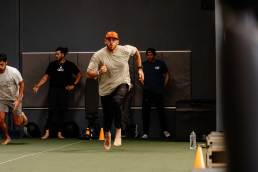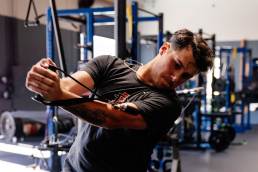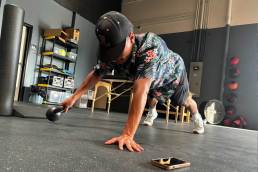With baseball season fast approaching, it’s time to talk in-season training strategies. I’m hoping to start a new habit this year and be consistent with providing useful information regarding training and overall health throughout the year. PLEASE call me out and hold me accountable if I am not sending out blog posts often, I can be lazy when it comes to starting something new and sticking with it!
When it comes to in-season training / general physical preparation, there is a ton of things to consider and discuss. So I’ll start off by introducing some simple ideas that will hopefully get you thinking about how you can attack the next 6 months of training. Hopefully most of these ideas are not new to you, but the goal is to take them from simply ideas, to action plans that are realistic and sustainable.
3 IN-SEASON TRAINING TIPS
1. MAINTAIN STRENGTH AND RANGE OF MOTION.
Two main goals should be to maintain the strength that you built during the off-season, and to maintain if not increase your “useable” ranges of motion. “Useable” meaning active mobility, not passive end ranges. Think our “A” group movement prep and Kinstretch routines, as opposed to static flexibility such as in most yoga. (For anyone who may be reading this and has not trained with me, think mobility / stability exercises performed with body weight, medicine balls, or resistance bands). You can refer back to your off-season training programs if needed, but hopefully you have a pretty good idea by now what your body seems to respond well to when it comes to your general movement preparation.
As for the big one, maintaining strength can be much simpler than most think. Gaining strength is the difficult part, maintaining that strength over prolonged periods of time can be done with very little volume and therefore stress to the body. Another advantage is that since most of you guys have been training for quite some time, you are far more likely to preserve over all strength.
To maintain strength in certain movements, you only need to express that strength 1-2 x per month. So for example for a hinge pattern, you could pick your favorite, lets say Trap Bar Deadlift, and only perform that lift with a heavy load for 1-3 reps once every two weeks! A favorite way of mine to incorporate that is to use 1-3 “warm up sets” for a lift as your dynamic reps, but also a safe work up to 1-2 heavy sets for 1-3 reps.
Example: Trap Bar Deadlift
Set #1: x 6 reps explosively @ 135lbs
Set #2: x 4 reps explosively @ 185lbs
Set #3: x 4 reps explosively @ 225lbs
Set #4: x 3 reps @ 275lbs
Set #5: x 2 reps @ 315lbs
When time is short, just a simple 3 x 3 with progressively heavier loads will get the job done just fine.
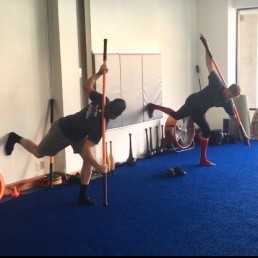
Devo and Ben getting after some SL T-Spine Mobility
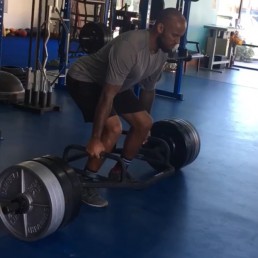
D-Wash on the Trap Bar Deadlift
2. MICRODOSING.
Short and sweet is often the best way to go when it comes to being consistent in the weight room throughout the entire season. Sure there’ll be days when you have the opportunity and feel the need to put in a good session throwing around some iron, but in general we can be talking 30-60 minute training sessions, often. Potentially every day! Now keep in mind I said “training”, not “weight lifting”. You could easily spend as little as 15 minutes of an hour session actually moving metal things around, the other 45 using body weight and bands etc., and still be on track to achieving your two main goals stated above.
I think the potential structures of these microdose sessions is something I’ll follow up with on my next post. But for now try to think about what is the minimum amount of reps (STRESS) you can perform while still maintaining your strength and mobility. Adding extra sets and reps just to feel a “pump” or satisfy your need to “grind” will take its toll over the course of a long season, and potentially lead to being inconsistent. Also triple sets and mini circuits are simple ways to get a lot of quality work done, with minimal down time, in a short period of time.
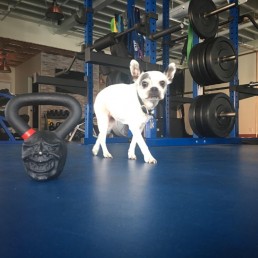
Guinness lives life in microdoses…..between naps!
3. THINK MOVEMENTS, NOT LIFTS.
We spent the off-season exploring many different lifts and trying to address movement deficiencies. Now that you’ll be in season it’s time to listen to your body and your intuition as opposed to me. You know which lifts your body responds well to, and what makes you feel good. In season isn’t a good time to tinker and try new things normally, as they have the potential to make you sore unexpectedly and affect your performance on the field.
What I suggest is to think of movements; hip hinge, squat, push, press, row etc. Then pick lifts that fall within that movement pattern that you enjoy and give you good results. The example already mentioned was of a hip hinge. I chose Trap Bar Deadlift, but you could choose from; KB Swing variations, Sumo Deadlift, Glute Bridge and many more. Doing this for each movement makes designing your workout much simpler than trying to think of specific lifts from a literally never-ending list.
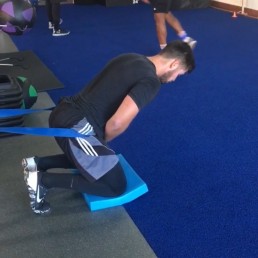
Austin with an RB Kneeling Hip Hinge
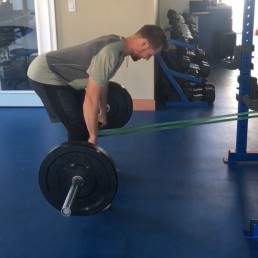
Jordan performing an RB Pull in RDL to help engage anterior core
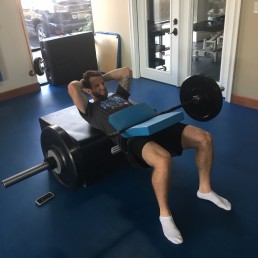
Jake with a creepy face considering the circumstance… and a BB Glute Bridge
On a final note, try not to get discouraged with repetitive workout routines if they become “boring”. Sticking to what you know best and are good at affords you the ability to really focus on your movements and keep them refined. At some point the boredom should move over and make room for what is simply a consistent goal driven routine. Nobody gets bored throwing bull pens or hitting in the cages, they’ve become a part of your life that are essential for your continued success, and training should be no different.
Symbiotic Training Center
Based in Miramar, California, Symbiotic Training Center is a one-stop shop for the modern baseball and softball athlete, combining individualized, sport-specific training programs, recovery amenities, physical therapy, and more. Powered by Joe Musgrove.
Why Baseball & Softball Athletes Need Personalized Training Alongside School Workouts
Achieving peak performance in baseball and softball training requires more than just regular high school workouts and practice.

